The Ultimate Guide to Curtain Headers: Grommet, Rod Pocket, Pinch Pleat & More Explained
Choosing a window treatment begins with selecting the header style, and for many, that single choice can be the most daunting part of the entire process. This tiny area of fabric locks you into specific hardware, determines the way your curtain moves, and defines its overall aesthetic, from casual to formal. But don’t worry, we’re here to help! Our comprehensive curtain header guide will provide you with clear photos and simple terms, giving visual examples of what each header looks like, the hardware it requires, its ease of installation, and day-to-day performance expectations, allowing you to choose the perfect header with complete confidence.
The Master Curtain Header Comparison Chart
To help you quickly evaluate the most common curtain headers, we’ve summarized their key characteristics here. This chart highlights each style’s look, hardware needs, ease of daily use, and installation difficulty, so you can find the perfect header for your room in seconds.
|
Header Type |
Visual Style |
Required Hardware |
Ease of Daily Use |
Installation Difficulty |
|
Grommet (Eyelet) |
Modern, Clean, Minimalist |
Decorative Rod Only |
Excellent (Glides effortlessly) |
Simple |
|
Rod Pocket (Pole Pocket) |
Casual, Traditional, Gathered |
Simple Curtain Rod Only |
Poor (Fabric snags easily) |
Simplest |
|
Pinch Pleat |
Formal, Elegant, Highly Structured |
Decorative Rod, Rings, and Pins, OR Ceiling Track |
Very Smooth (Once installed on rings/track) |
Most Complex |
|
Back Tab |
Modern, Clean, Soft Waves |
Decorative Curtain Rod Only |
Fair (Fabric loops can snag slightly) |
Simple |
|
Tab Top |
Very Casual, Rustic, Cottage |
Decorative Curtain Rod Only |
Fair (Visible loops can be difficult to slide) |
Simple |
Quick Note: Product photos on our website often feature pinch pleats purely for display purposes. However, all header types are available on the product detail page, so you can pick the style that works best for your space!

A Deep Dive: The 4 Most Common Curtain Header Types
Selecting a custom window treatment header requires evaluating the look, the needed hardware, and the daily function. We explore the four most popular styles, applying our "Hardware Triangle" framework to each.
Grommet (or Eyelet): The Modern & Simple Choice
Metal rings, or grommets, are punched directly into the fabric, letting the decorative rod pass straight through. The design naturally forms wide, deep, and uniform "S" folds. The finished look is clean, contemporary, and minimalist.
Hardware & Function
· Required Hardware: Only a decorative rod, no rings or pins needed.
· Installation Difficulty: Simple - just thread the rod through the rings.
· Daily Use: Excellent - metal-on-metal or metal-on-wood contact ensures smooth gliding. Ideal for living rooms, bedrooms, or patio doors.
Style Tip: Our Zen Linen collection works beautifully with a grommet header. The grommet keeps the focus on the natural linen texture, not the hardware. Draw them open each morning and notice the effortless movement.

Rod Pocket (or Pole Pocket): The Classic, Simple Install
This header is created by sewing a channel at the top of the fabric and allowing the rod to slide through, producing a gathered look that’s casual and traditional with a ruffled top.
Hardware & Function
· Required Hardware: Simple - a basic curtain rod.
· Installation Difficulty: Simplest - just thread the rod through the sewn channel.
· Daily Use: Poor - fabric tends to snag and bunch. Best for decorative side panels or small kitchen windows that are rarely moved.
Style Tip: Rod Pocket panels work best as decorative window accents that don’t need to be opened or closed often. Light fabrics, like June Sheer curtains, soften incoming light while letting the texture do the aesthetic heavy lifting.

Pinch Pleat: The Formal & Tailored Choice
Pinch Pleats are sewn into structured folds to create a permanent, elegant shape. These pleats come in different styles, known as two-finger or three-finger, which refers to the number of folds pinched together at the top of each pleat, giving the curtain its fullness and a tailored appearance. The overall look is formal, structured, and sophisticated.
Hardware & Function
· Required Hardware: Decorative rod, rings with eyelets, and drapery pins.
· Alternative Hardware: Ceiling track for room dividers or an integrated, high-end appearance.
· Installation Difficulty: Most complex—measuring and pinning pleats is time-consuming.
· Daily Use: Very smooth - glides effortlessly once installed.
Style Tip: Choose rich fabrics like velvet or heavy linen to emphasize the pleat structure, like our Luxury Pinch Pleated linen blend. Pair with a blackout ZeroLight TriCore™ lining to minimize light seepage and enjoy superior coverage compared to grommet or rod pocket styles.

Tab Top & Back Tab: The Casual & Clean Alternatives
Tab Top curtains feature visible loops for a rustic, casual vibe. Back Tab hides loops behind the panel, forming soft, unstructured waves similar to a grommet but without metal.
Hardware & Function
· Required Hardware: Decorative rod only.
· Installation Difficulty: Simple - slide the loops onto the rod.
· Daily Use: Fair - loops can snag and aren’t as smooth as grommets.
Style Tip: For a polished look, pair Back Tab headers with soft vertical lines, like Willow Linen Pinstripe, to maintain a tailored texture. For a casual, relaxed vibe, use Tab Top headers with patterns such as plaid or checks, ideal for sunrooms or informal spaces.
How to Make Your Final Choice a Simple Decision
Choosing the right header style comes down to balancing your room’s aesthetic, your daily use needs, and the hardware you already have in place. Use this simple guide to quickly match your priorities with the best curtain header for your space:
• Modern & Easy Use: Grommet headers provide smooth daily operation and give your windows a clean, contemporary look.
• Easiest, Most Affordable Install: Rod Pocket headers are ideal for decorative panels that aren’t opened often.
• Formal & Sophisticated: Pinch Pleats create structured, elegant drapery, perfect for upscale or traditional spaces.
• Casual or Farmhouse: Tab Top headers feature relaxed loops that add a charming, informal vibe to your room.
• Tailored Wave Without Metal: Back Tab headers create soft, clean folds without any visible hardware.
Hardware Considerations
• Ceiling Track: Pinch pleats work best with ceiling tracks, ideal for high-end or blackout setups.
• Rod Without Rings: Grommet, rod pocket, tab top, and back tab headers hang directly on the rod for simple, ring-free installation.
FAQ: Real Reader Questions Answered
Q: “Do grommet curtains let in light?”
A: Yes, a small amount light can peek around the rings.
Q: “Are pinch pleats more expensive?”
A: While pinch pleats require extra craftsmanship, we think the crisp, tailored look they create is worth the investment.
Q: “What size rod do I need for Rod Pocket headers?”
A: Choose a slim rod that slides easily through the pocket and is snug enough to look tailored, but not so tight that it bunches or snags.
Style Recap & Final Takeaway
Each curtain header brings its own personality, from the sleek glide of grommets to the soft folds of back tabs, or the tailored structure of pinch pleats. Once you’ve chosen your style, double-check your measurements to ensure a flawless drape.
Three Girls offers every header type, fully customizable for your space. Ready to read our quick measuring guide to guarantee the perfect fit?
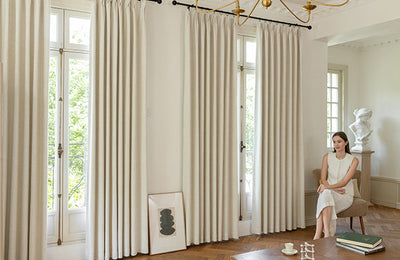
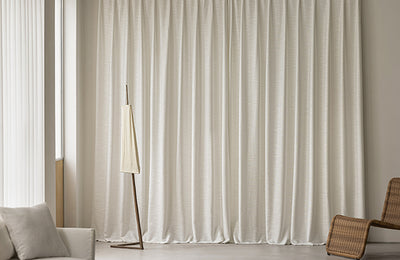
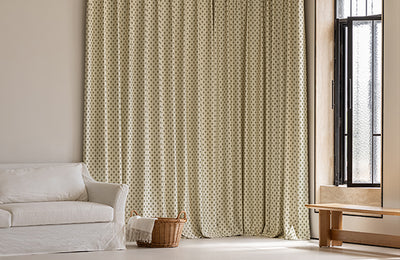
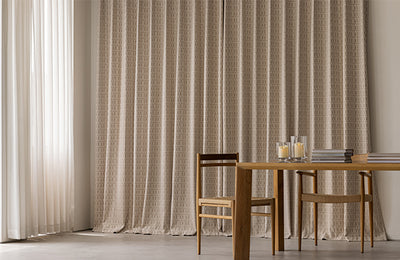
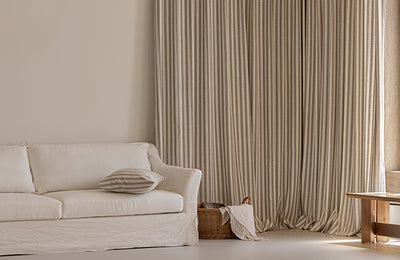
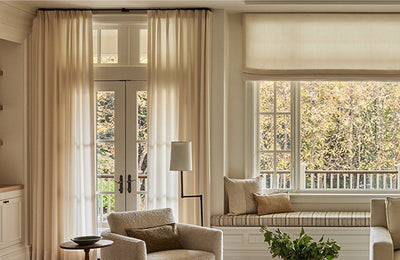
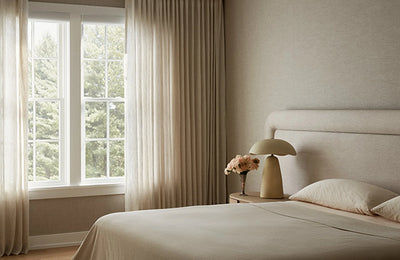
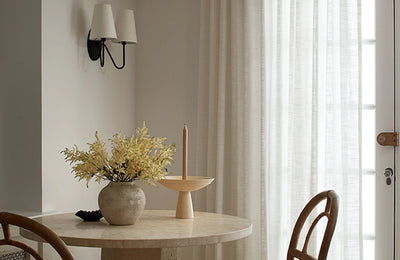
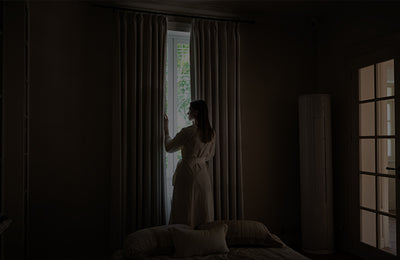
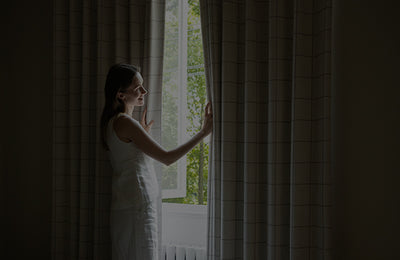
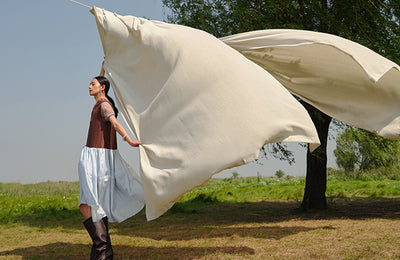
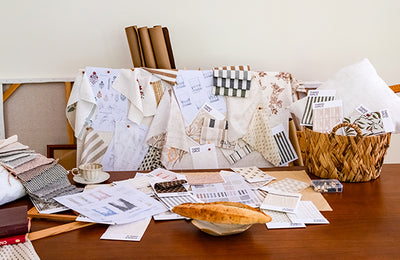
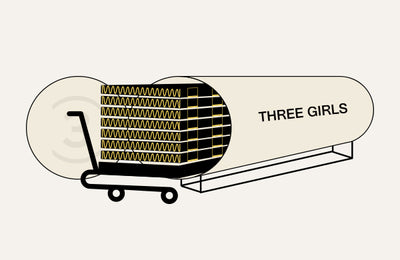
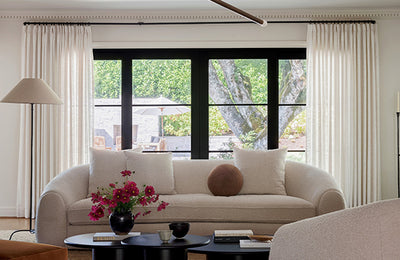
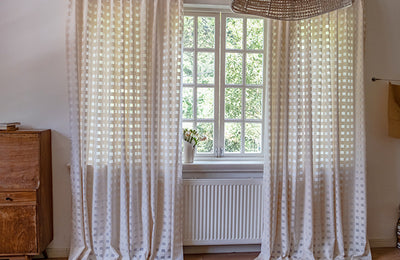
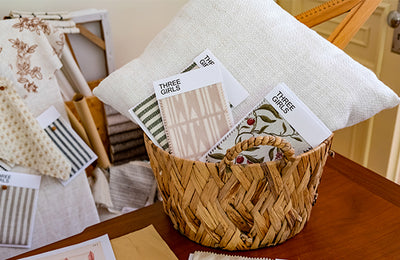
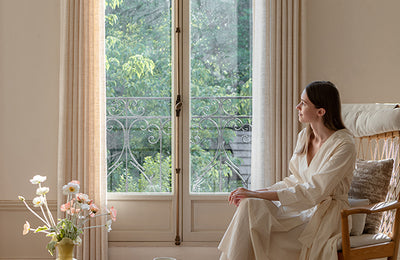
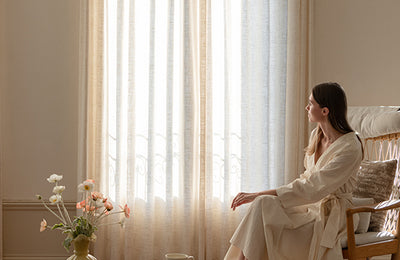
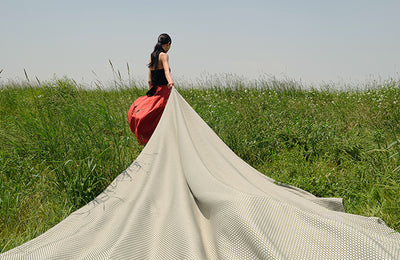
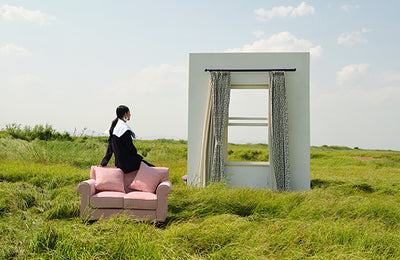
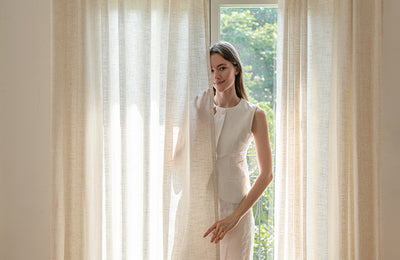
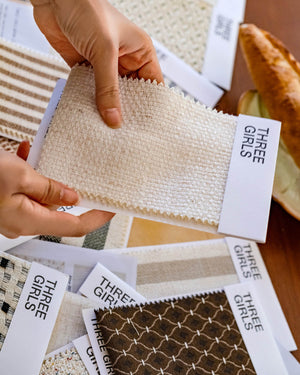
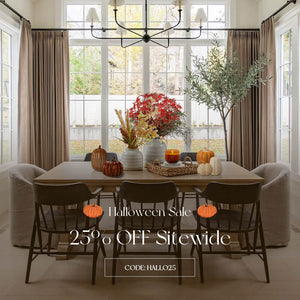
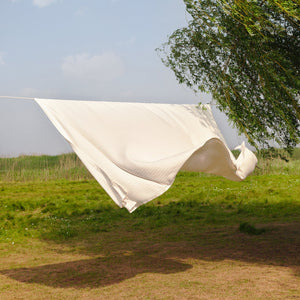
Leave a comment
All comments are moderated before being published.